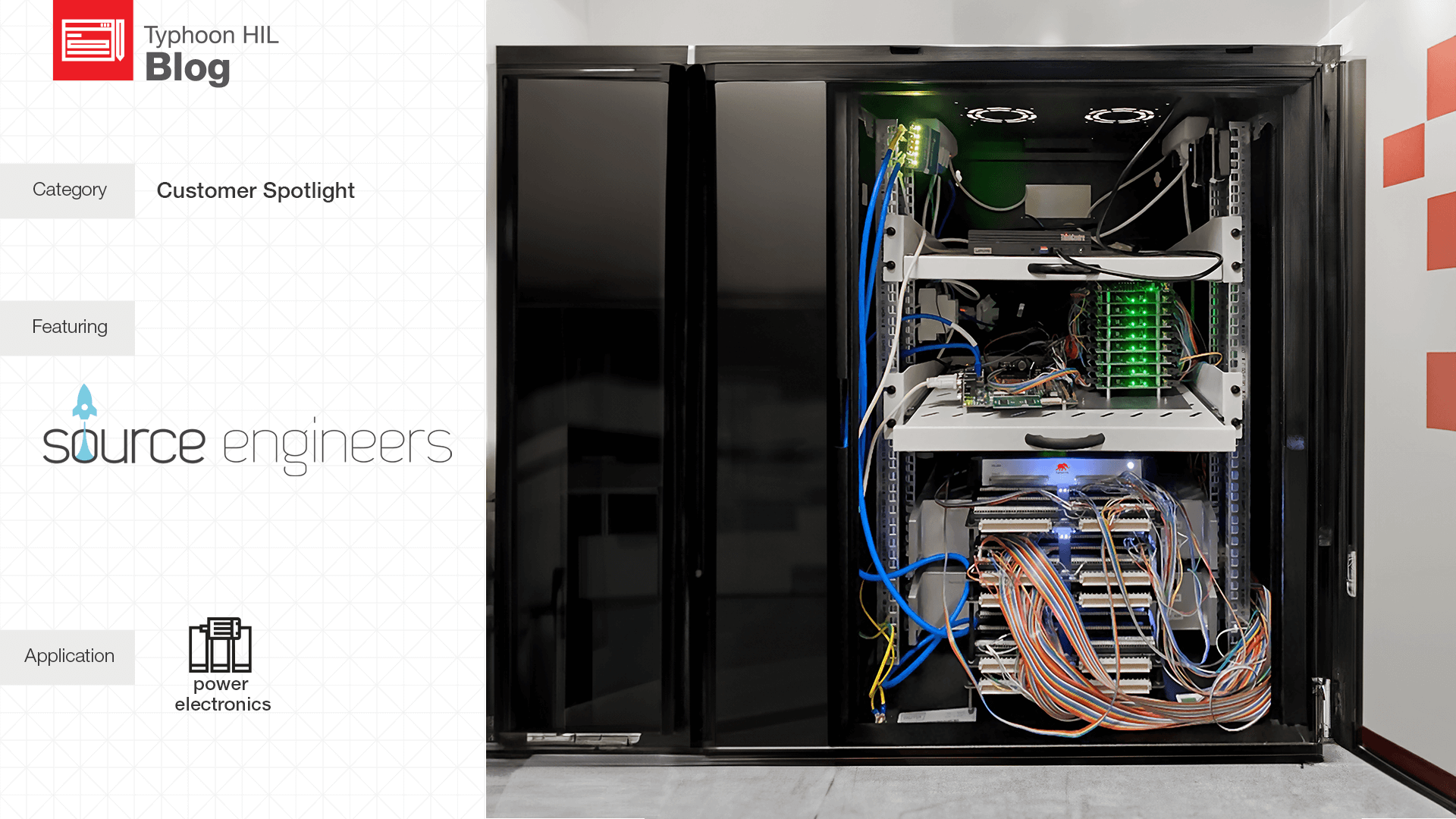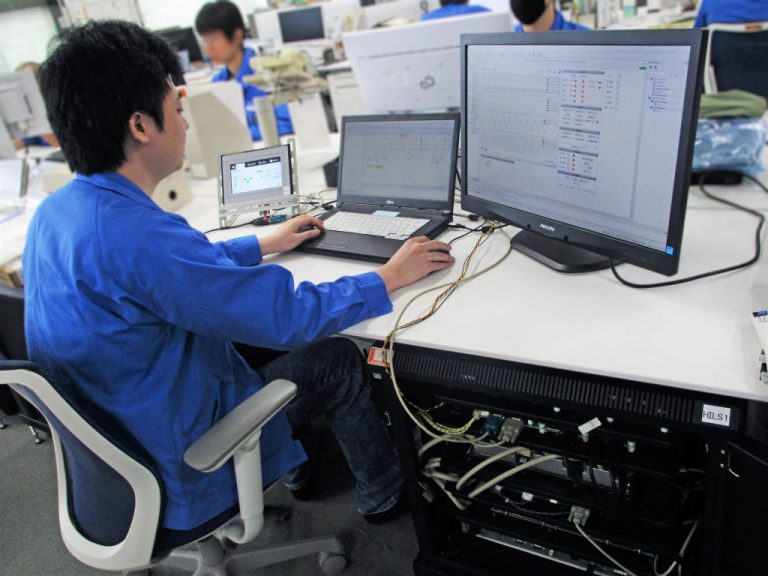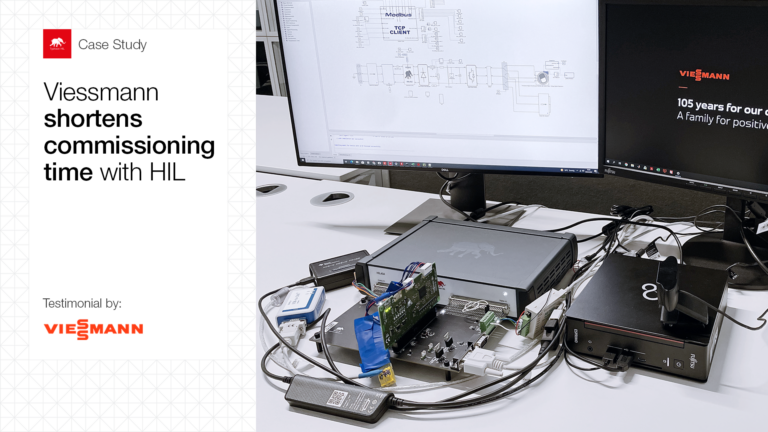Introduction | About the ARTEMIS Project
Source Engineers is an embedded Software Company, based in Bern, Switzerland. In cooperation with the European Space Agency (ESA) and the University of Bern, Source Engineers develops the firmware to control the “Laser Ablation Ionization Mass Spectrometer” (LIMS), a mass spectrometer that will be used on the moon during one of the missions of NASA’s Commercial Lunar Payload Service Program.
The use of a Typhoon HIL HIL404 real-time simulation device and a remote-IO device for rapid prototyping and for test automation allowed Source Engineers to develop the firmware independently of other companies and to deliver high-quality firmware releases to the University of Bern.
Challenges | Software Test-Setup
The University of Bern needs to develop the LIMS mass spectrometer in less than 5 years. This short timeline – for a Space project – can only be achieved if the firmware development at Source Engineers can be started in parallel with the development of the hardware sub-systems.
To allow this, a rapid prototyping infrastructure is needed that allows the development of firmware on a test setup while in parallel other companies develop the LIMS hardware.
The test setup has to behave like the real mass spectrometer instrument, such that the same firmware release can be tested on the test setup and on the real instrument.
Solution | The Rapid Prototyping Setup
Early in the project, during the “Feasibility and Requirements Engineering” phase, University of Bern and Source Engineers defined the following rapid prototyping strategy:
- The CPU used to control the mass spectrometer is evaluated during the “Requirements Engineering and Feasibility” phase. Immediate availability of evaluation boards is a must.
- The infrastructure for a test setup that behaves like the real mass spectrometer is evaluated and purchased during the “Requirements Engineering and Feasibility” phase. Immediate availability of the selected components is a must.
- The digital interface used to control the mass spectrometer hardware is defined by the University of Bern and cannot be changed by the involved hardware development companies.
- The digital interface is prototyped on PCBs by the University of Bern such that they can be used in the test setup.
Based on this strategy, the rapid prototyping platform presented in Figure 1 was developed.
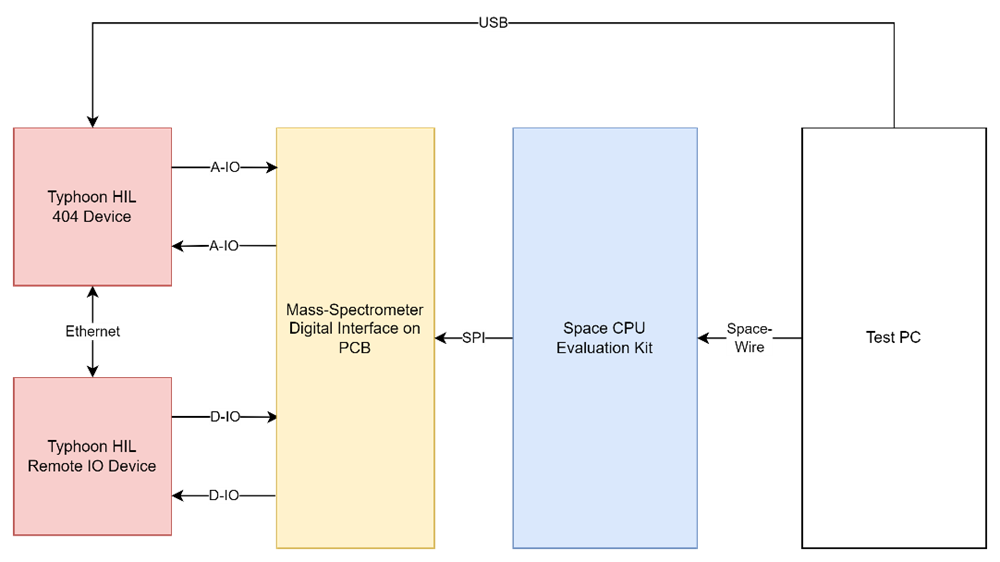
The compact test setup was manufactured and fits into a server rack, as seen in Figure 2.
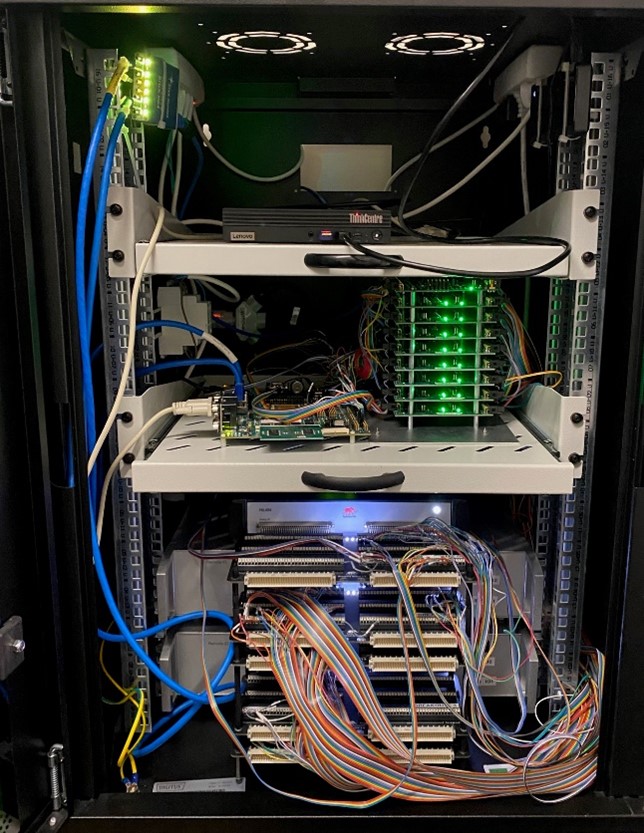
HIL Benefits | Faster Development with HIL Prototyping
Classic projects without a rapid prototyping strategy suffer from the dependencies between hardware and firmware development. First, a large part of the system and hardware design needs to be completed before the firmware development can be started. This often results in an unproductive gap at the beginning of the development phase, as shown below in Figure 3.

Using the above-described rapid prototyping strategy allows us to structure the project in a different way. Because the rapid prototyping setup was evaluated and purchased during the “Feasibility and Requirements Engineering Phase” the full development time can be used for firmware development and the unproductive gap can be avoided, as represented in Figure 4.

The chosen test setup using Typhoon HIL solutions allows to simulate analog and digital IOs in exactly the same way as with the real LIMS instrument. This allows Source Engineers to test exactly the same firmware releases that are later used on the real mass spectrometer. This equivalence and the ability to automate tests allows Source Engineers to develop the firmware independent of the hardware development and to deliver high-quality firmware releases to the University of Bern.
Thanks to the Typhoon HIL test infrastructure, the test time in the clean-room laboratories of the University of Bern can be reduced significantly. This results in a reduction of the overall development costs.
Credits
Text | Flurin Bühler, Jakob Wanner
Visuals | Flurin Bühler, Karl Mickei
Technical Editor | Jakob Wanner, Remo Seiler
Blog Editor | Debora Santo
